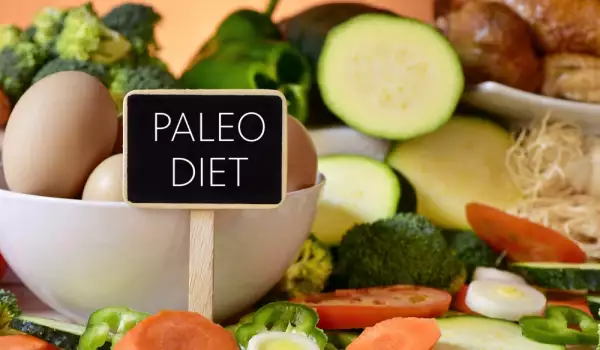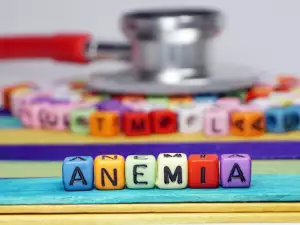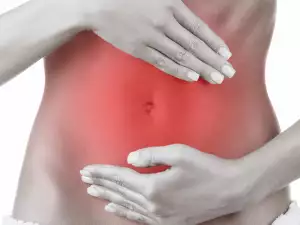The thyroid gland functions as a hormone regulator. It plays an important role in metabolic processes, hormone regulation and body temperature. In case of thyroid disease, it is chronically inflamed and cannot function as well as a healthy thyroid.
It often slows or stops the production of essential hormones, which can cause weight gain, dry skin, hair loss, fatigue, constipation and sensitivity to cold.
What is Hashimoto's disease
Hashimoto's thyroiditis is the most common autoimmune condition and the leading cause of hypothyroidism, or underactive thyroid. It is sometimes called Hashimoto's disease.
Hashimoto's disease is more common in women than in men. It is among the so-called autoimmune diseases and is associated with the destruction of the thyroid gland by white blood cells. It is due to the increased level of antibodies.
In this process, hormonal hypofunction of the gland is observed, as its ability to form the hormone T4 and convert it into its active form T3 is impaired. The disease affects the whole organism, but mostly affects the metabolic processes and the functions of the cardiovascular system.
The reasons for the triggering of Hashimoto's disease can be the most diverse. According to some theories, it is hereditary, according to others it is the result of an infection and according to others it is due to the accumulated stress of modern hectic lifestyles, improper nutrition and indigestion.
These factors can lead to increased intestinal permeability, which underlies the course of Hashimoto's thyroiditis. There are many reasons for the appearance of the disease and there is no way to affect all the factors that affect it, the only correct strategy is through a change in eating habits.
The role of food in Hashimoto's Disease
Food is one of the tools we can use to support thyroid function. Adequate Hashimoto's diet can have a beneficial effect on inflammation and to facilitate weight management.
Principles of nutrition in Hashimoto's:

- The food that is present in the menu for Hashimoto's must be characteristic of the given geographical region in which we live.
- Avoid eating more exotic foods or super foods, because they are rich in lectins that increase intestinal permeability.
- Regular and frequent meals during the day, periodic fasting and skipping meals during the day can lead to additional complications and deterioration of the function not only of the thyroid gland, but also of other organs and processes in the body.
People who are diagnosed with Hashimoto's or another autoimmune disease can change their diet, at least to relieve symptoms.
For those suffering from Hashimoto's or hypothyroidism, there are a few important nutrients to be aware of when eating.
Iodine - iodine intake is something that people diagnosed with Hashimoto's should be very careful with. They should take some iodine, but at the same time make sure that the amount is sufficient.
The main iodine sources are some seafood - seaweed, clams, shrimp, salmon, tuna. Animal products such as yogurt, milk and eggs. Fruit like blueberries and strawberries. It is also important to be careful about iodized salt, which is a major source of iodine.
Selenium - adding more selenium to the menu is recommended when it comes to nutrition in this disease. Foods high in selenium are Brazil nuts, oysters, sunflower seeds, mushrooms.
Vitamin D - with Hashimoto's it is good to increase the intake of vitamin D, which supports the absorption of calcium in the body. The easiest way to get it is sunbathing.
During the colder, darker months of the year, vitamin D is obtained through supplements or through food, fish and organic dairy products are good.
Other foods - foods high in phytonutrients, quality fats and probiotics are beneficial for people with Hashimoto's. A wholesome food diet, with plenty of fruit, vegetables, healthy fats and whole grains can be beneficial.
While the Hashimoto's diet can help increase or decrease certain micronutrients, nutritional supplements can also be included.
Gluten-free diet
Many people with Hashimoto's are sensitive to certain foods, especially those containing gluten. So far, it has been proven that gluten is contraindicated only when diagnosed with celiac disease.
Many who suffer from Hashimoto's are sensitive to gluten. Symptoms such as constipation, diarrhea, cramping, bloating, nausea, reflux, gas, headaches, fatigue, and brain fog are symptoms associated with reactions to gluten.

The gluten-free diet leads to improved digestion, mood, energy levels and weight loss. Gluten-free diets eliminate all foods containing gluten, which is a protein found in wheat, barley, rye and other grains.
Gluten is often found in pasta, bread, baked goods, beer, soups and cereals. The best way to avoid gluten is to focus on foods that do not contain gluten. These are vegetables, fruit, lean meats, seafood, beans, legumes, nuts and eggs.
Grain-free diet
The grain-free Hashimoto's diet is very similar to the gluten-free diet, except that grains are also banned here. They include:
- amaranth;
- quinoa;
- millet;
- oatmeal;
- buckwheat.
However, there is little evidence that cutting out gluten-free grains is beneficial for health.
Paleo or Autoimmune Modified Paleo Diet
The paleo diet tries to get closer to the eating pattern of our ancestors, with an emphasis on whole and unprocessed foods.
Grains, dairy products, potatoes, beans, lentils, refined sugar and refined oils are not allowed. Meats from animals, that have been fed with grass are recommended, as well as the consumption of vegetables, nuts without peanuts, seeds, seafood and healthy fats such as avocado and olive oil.
The autoimmune paleo diet aims to reduce these foods that can cause inflammation and damage to the gut. The basic principles of the paleo diet also exclude vegetables from the potato family, such as tomatoes, as well as eggs, nuts and seeds.
Low Glycemic Index Diet
This diet is based on an index that measures how each food affects the blood sugar levels. Some people with type 2 diabetes use this diet. It can also reduce the risk of heart disease and help some people lose weight.
It is more important for a person to follow a well-balanced diet that works optimally for their lifestyle than to try to put a label on their eating habits. People should focus on whole, unprocessed foods and eat natural foods and avoid processed food. Those who suffer from Hashimoto's need to get all the nutrients they need and their diet should be geared towards this need.



















Comments